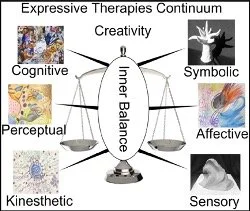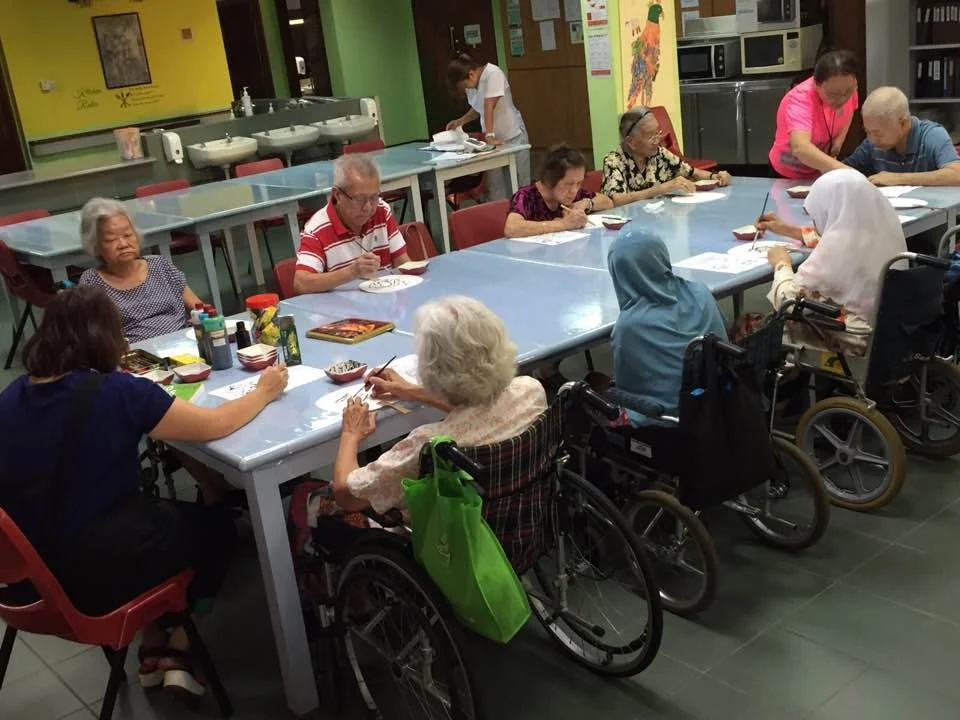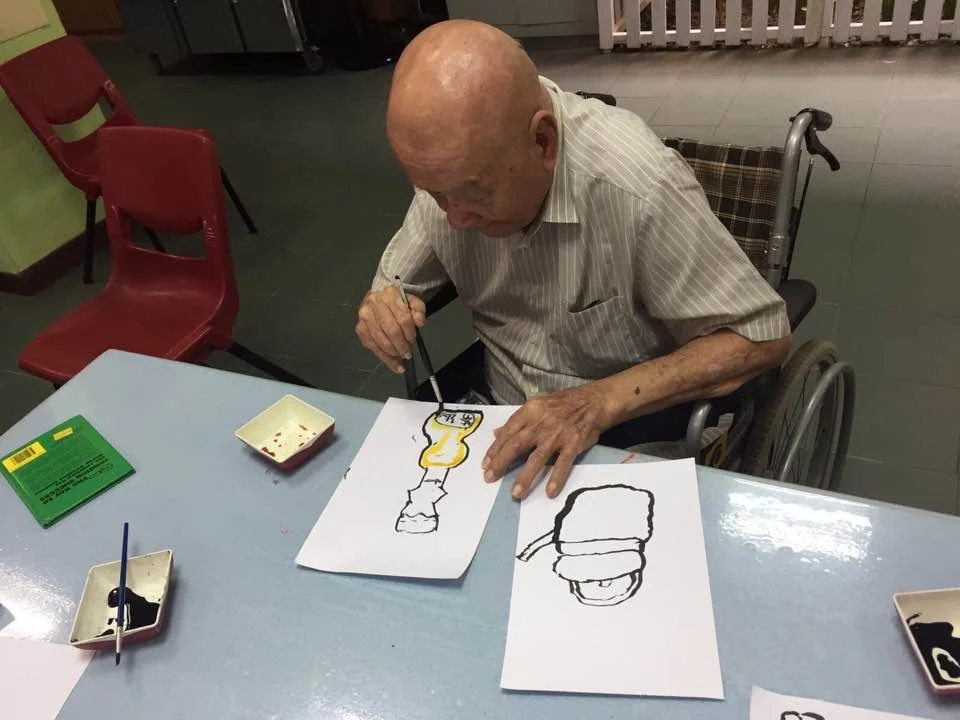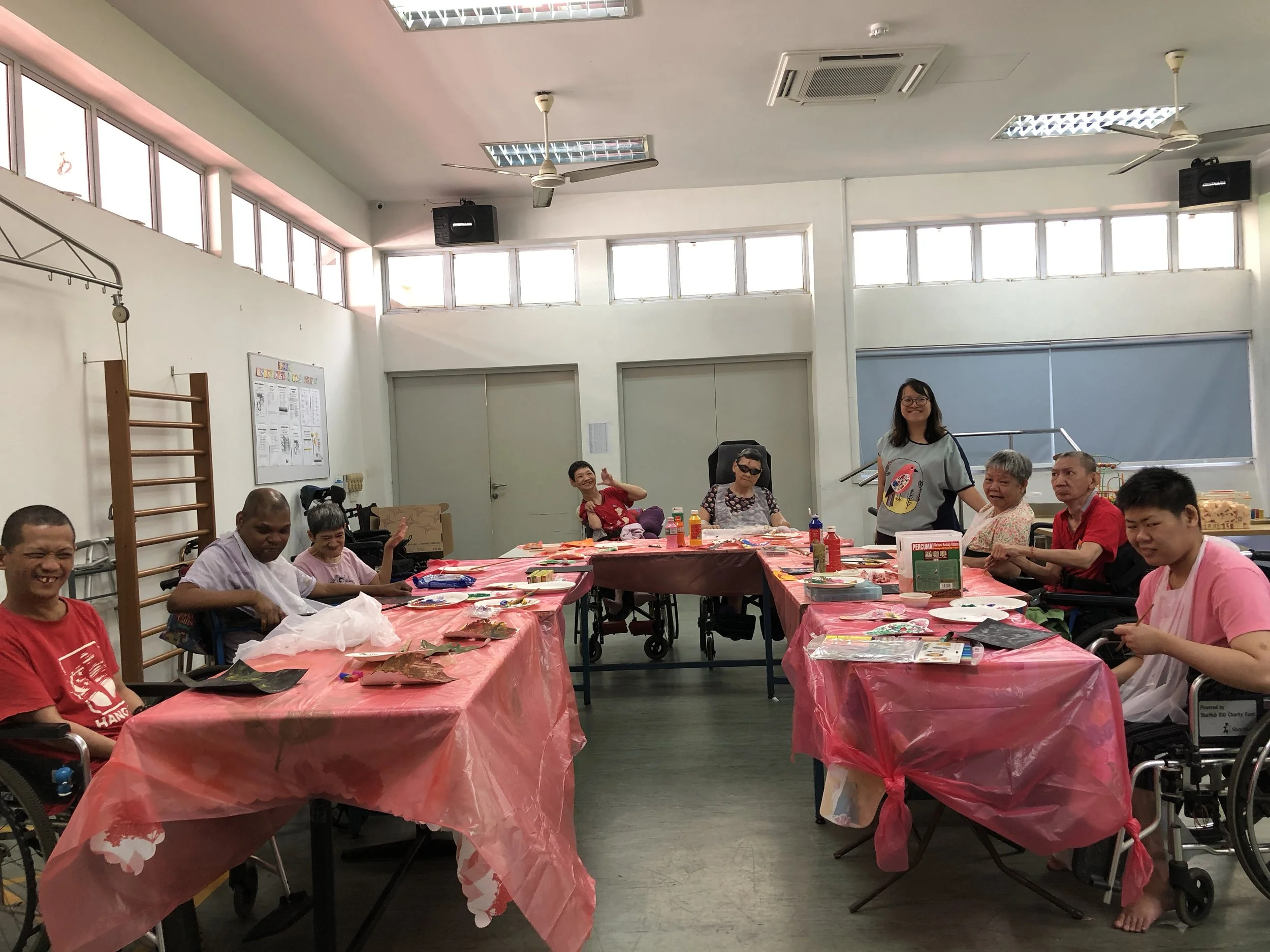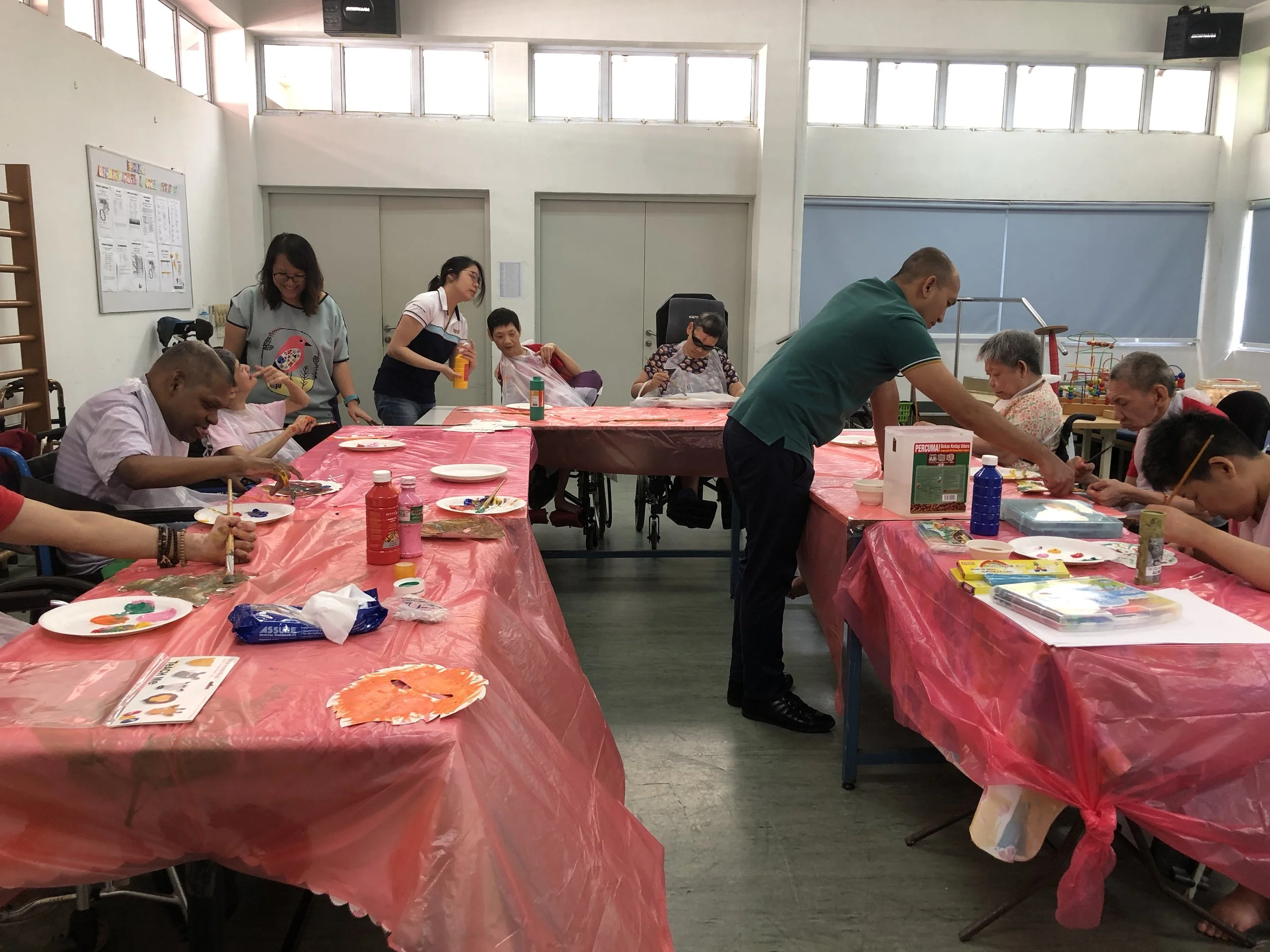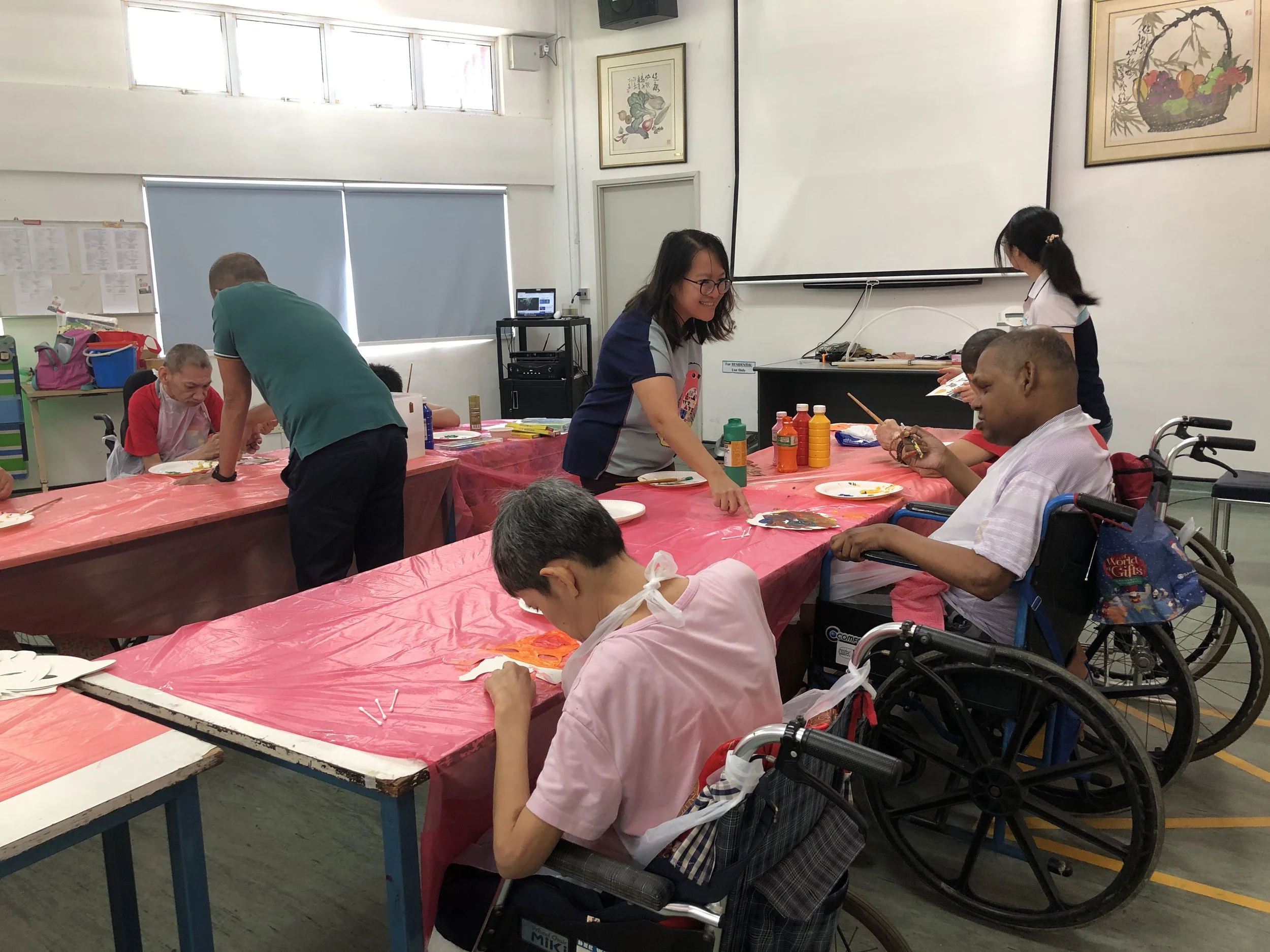I have diverse experience facilitating art therapy sessions for elderly with Dementia in a nursing home setting, people with physical and intellectual disabilities, as well as children and adolescents living in residential home setting. The Expressive Therapies Continuum (ETC) below shows how art-making can help people meet different needs; such as the need to express oneself cognitively, symbolically, perceptually, and affectively. Creative art-making under the guidance of an art therapist could also facilitate the meeting of physical needs in the kinesthetics and sensorial sense.
Hinz, L. D. (2019). Expressive therapies continuum: A framework for using art in therapy. Routledge.
The photos shown here have been given permission by the participants and/or their family members to be used.
Aged Care setting (Singapore)
Art Therapy in aged care settings gives great support in orienting elderly to the present (here and now), providing a medium for reminiscence, as well as provide relief for vulnerable feelings such as helplessness, grief, depression, and frustration that comes with aging and the loss of certain abilities. Creative and therapeutic art-making could also provide a boost to their self-esteem and generates a sense of pride as elderly recognise that they still have agency and the power to create.
Disability Setting (Singapore)
Art Therapy for people with physical and intellectual disabilities provides great support and relief for vulnerable feelings such as helplessness, grief, depression, anger, and frustration. In my experience working with people who are abled-differently, art therapy is also a powerful medium that allows them to tap into their spirituality and inner resources of strength, joy and faith. Therapeutic art-making designed to cater to their abilities help them recognise that people with disabilities are capable of agency, beauty and creativity.
